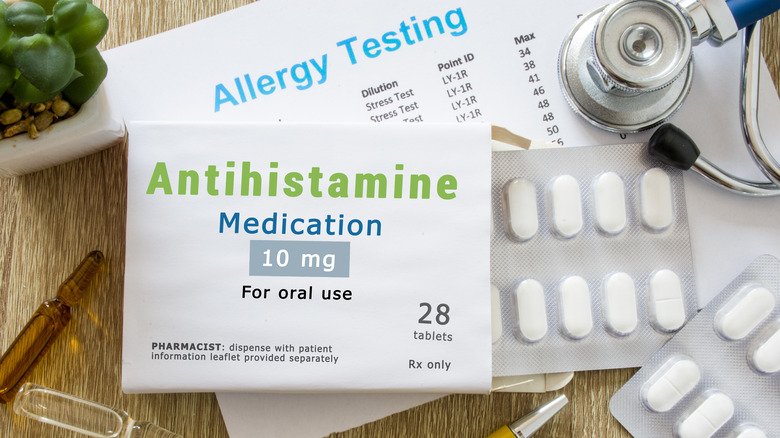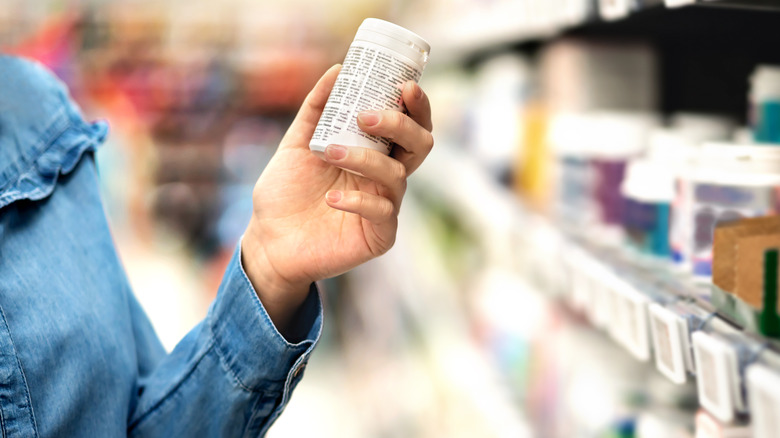Why Some Antihistamines Can Be Risky If You Have High Blood Pressure
If you've been diagnosed with high blood pressure, you probably already know that certain over-the-counter medications are off limits. Drugs like antacids that contain a lot of sodium can raise already high blood pressure to dangerous levels (via University of Michigan Health). Additionally, many nonsteroidal anti-inflammatory drugs (NSAIDs) contribute to fluid retention, which can increase blood pressure as well. If you frequently take certain antihistamines to combat allergies, you may also be putting yourself at risk.
Antihistamines such as pseudoephedrine, often marketed as Sudafed, have been used for decades to treat sneezing, itching, swelling, and other common symptoms of allergies (via WellRx). More recently, second-generation antihistamines like loratadine, commonly sold under the brand name Claritin, and fexofenadine, sold under the brand name Allegra, have joined the list of drugs that can fight allergies with the added benefit of not causing drowsiness. But different formulations of these medications are sold, and some of them contain decongestants which are made to improve your ability to breathe clearly. However, the way these decongestants work can be harmful to your health if you live with high blood pressure.
Look out for antihistamines that contain decongestants
In order to reduce the swelling in your nasal passages and allow air to flow freely again, decongestants have to create more space in your nose. They do this by shrinking your blood vessels in order to slow down the amount of blood able to move through them (via Mayo Clinic). When your blood vessels constrict, blood pressure rises as a result. Decongestants also prompt your body to release the hormone and neurotransmitter known as norepinephrine, which can cause an increase in heart rate and blood pressure (via WellRx). People diagnosed with high blood pressure should avoid medications that contain decongestants by paying close attention to drug labels and ingredient lists.
When an antihistamine contains a decongestant, the label will often have a letter "D" after the original name of the drug. For example, Claritin-D contains one of the most common decongestants, pseudoephedrine. Also look for labels that say "sinus," "cold," or have the letters "PD" or "PE" in the name of the drug. While medications containing decongestants are required to be clearly labeled, people with heart problems or high blood pressure should be extra cautious when looking for allergy and congestion relief.


